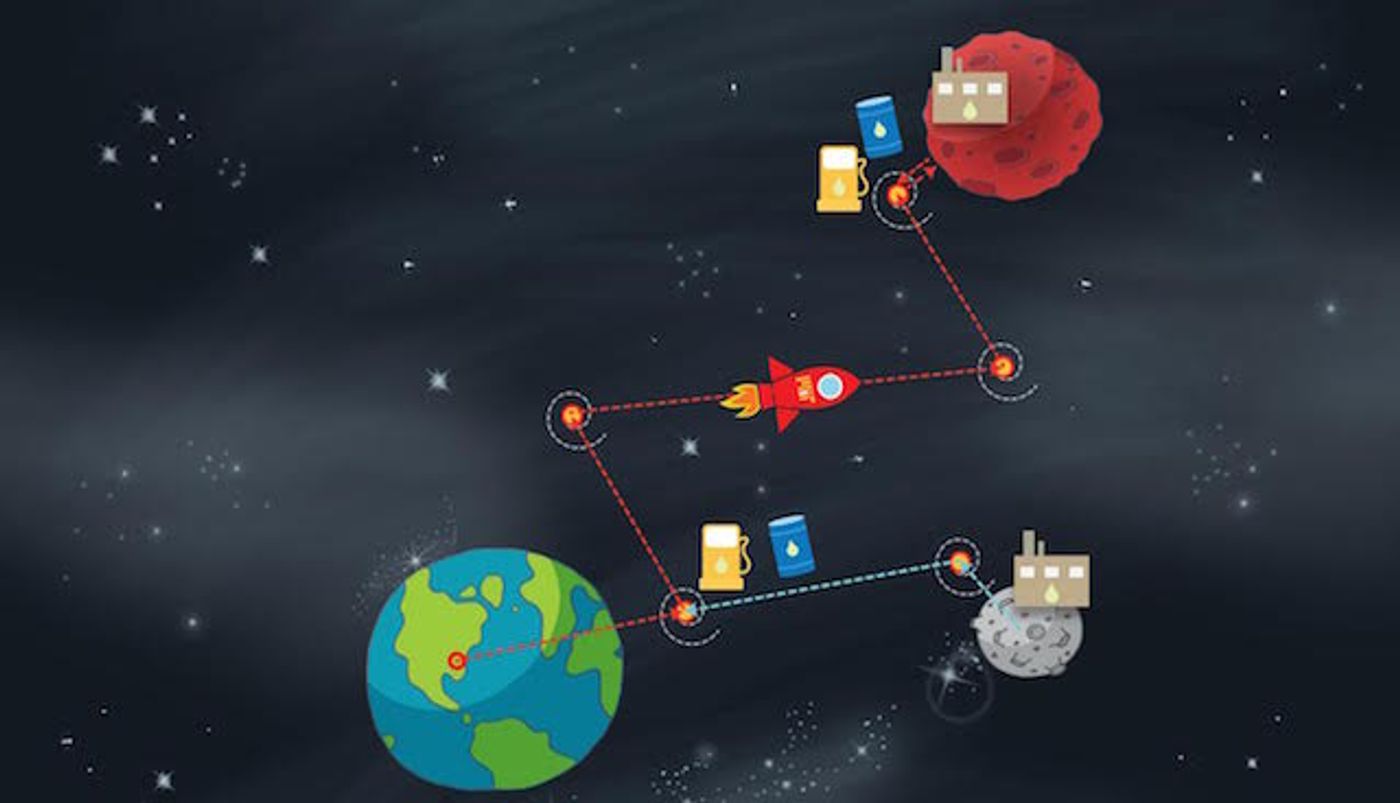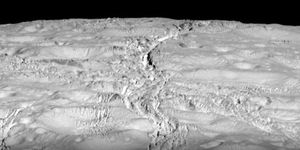Part I of this article explained how a team from MIT has come up with a revolutionary new weight and cost-saving plan for a manned mission to Mars in which ships would be launched from Earth with just enough fuel to get them into orbit, and then rendezvous with the fuel they needed to complete the journey. The raw materials for the fuel would be robotically mined on the Moon, then processed into fuel, and launched toward its rendezvous with the Mars-bound ships. The MIT team’s plan is based on the PhD thesis of Takuto Ishimatsu, a current postdoc at MIT.

So far, NASA has employed two main strategies for supplying missions with resources: The first is a carry-along approach, in which everything the mission requires: all vehicles, provisions, and fuel are launched at the same time in the same vehicle. This was the approach NASA used for the Apollo missions. The second is a "resupply strategy," in which resources are replenished on a regular basis the way they are with regular flights to the International Space Station.
These models have worked fairly well for missions to the Moon and the ISS, but if we’re going further into space, to Mars or beyond, sending everything up in one launch is prohibitively expensive, and resupply missions simply would not be plausible. As Olivier de Weck, a professor of aeronautics and astronautics and of engineering systems at MIT and Ishimatsu put it, "As budgets are constrained and destinations are far away from home, a well-planned logistics strategy becomes imperative."
This new approach that the MIT team advocates is referred to in the space exploration community as "in-situ resource utilization”. Simply put, it is the idea that resources such as fuel, water, and oxygen, can, in many cases, be collected and produced along the way during space missions. In this scheme materials produced in space can supplant those that would otherwise be transported from Earth. Any place there is water ice, for example, could be mined to produce all four of these vital consumables.
"There's a pretty high degree of confidence that these resources are available," says de Weck. "Assuming you can extract these resources, what do you do with it? Almost nobody has looked at that question."
The main body of Ishimatsu’s work on the project was the theoretical development of a network flow model which explored various routes to Mars, comparing NASA’s standard direct carry-along flight to a flight with a series of refueling pit stops along the way. Ishimatsu was trying to find the smallest amount of mass that could be launched from Earth to accomplish a Mars mission. Remarkably, even when he factored in the mass of launching a fuel-producing plant and spare tankers that would need to be pre-deployed, he found that the "in-situ resource utilization” model required far less mass to be launched from Earth. Of course, when you look at pictures of a skyscraper-sized Saturn 5 rocket, keep in mind that, when loaded, 97 percent of the mass was propellant.
The MIT team’s vision extends far beyond a single mission to Mars. ”Our ultimate goal,” says Ishimatsu, “is to colonize Mars and to establish a permanent, self-sustainable human presence there. … However, equally importantly, I believe that we need to 'pave a road' in space so that we can travel between planetary bodies in an affordable way.” de Weck adds that (their plan) …suggests that the moon could play a major role in getting us to Mars repeatedly and sustainably. …People have hinted at that before, but we think this is the first definitive paper that shows mathematically why that's the right answer.”
Source:
phys.org









